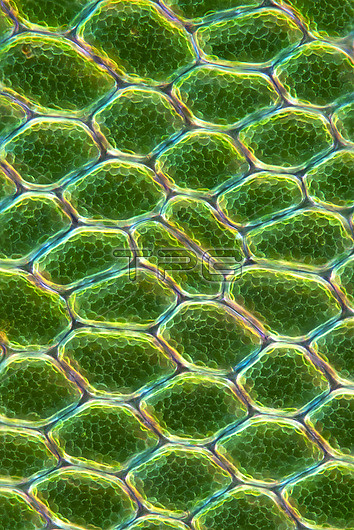
Darkfield and polarised light micrograph of the underside of a moss (Cinclidium stygium) leaf. C. stygium is found in wetland habitats, such as bogs, fens, and wet meadows, in many parts of the world, including North America, Europe, and Asia. It is known for its distinctive appearance and habitat preferences. It is a small moss, usually no more than a few centimetres tall, that forms dense mats. It has a unique structure, with leaves that are curled back on themselves, giving the plant a ruffled appearance. The leaves are dark green and can be up to a centimetre long, and are arranged in dense spirals around the stem. C. stygium is an important component of wetland ecosystems, playing a crucial role in regulating water and nutrient cycles. Like other mosses, it can absorb large quantities of water, helping to retain moisture in the soil and prevent erosion. It also serves as a habitat and food source for a variety of small invertebrates, such as insects and snails, that are important components of wetland food webs. In addition to its ecological importance, the moss has been used in traditional medicine for a variety of purposes, including as a treatment for diarrhoea and as a poultice for wounds and skin irritations. Like many other wetland species, it is vulnerable to habitat destruction and other forms of human disturbance, and its populations are threatened in many areas.
| px | px | dpi | = | cm | x | cm | = | MB |
Details
Creative#:
TOP28927471
Source:
達志影像
Authorization Type:
RM
Release Information:
須由TPG 完整授權
Model Release:
n/a
Property Release:
n/a
Right to Privacy:
No
Same folder images:

 Loading
Loading